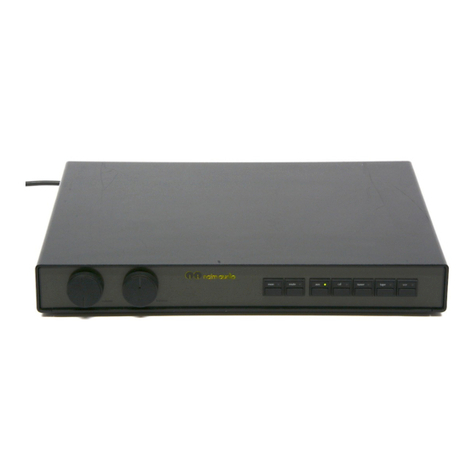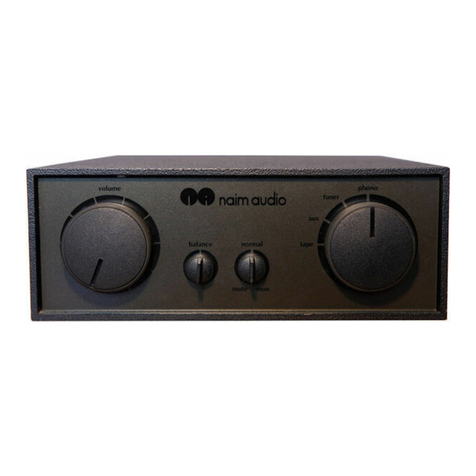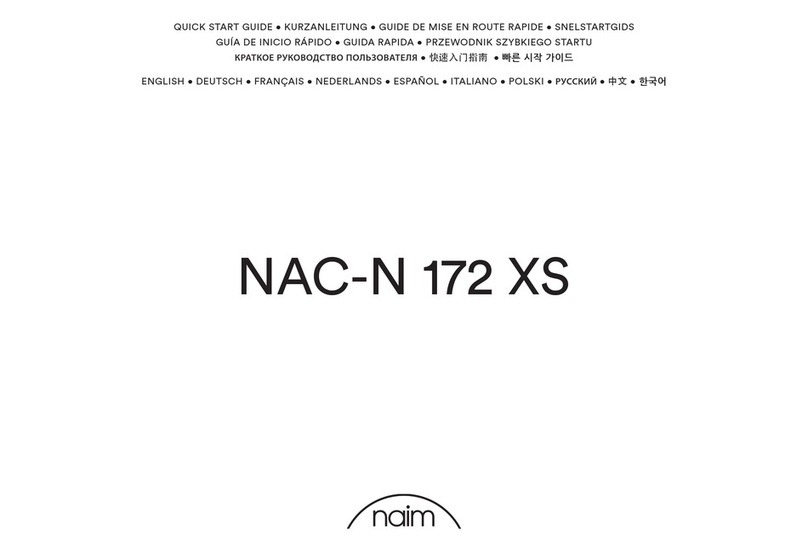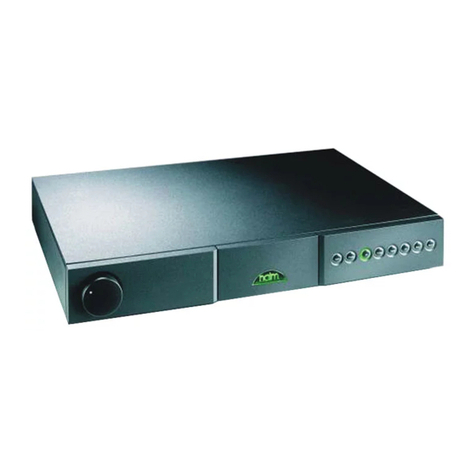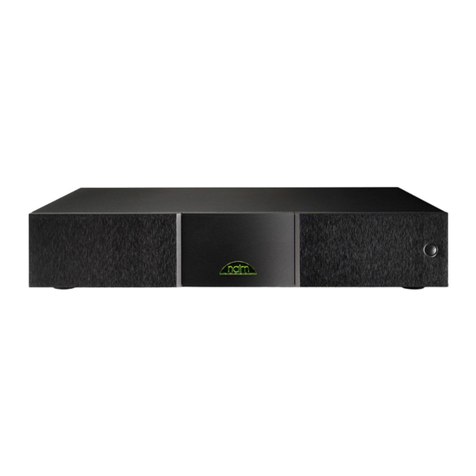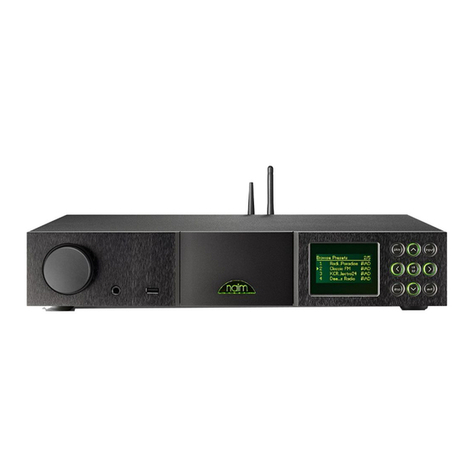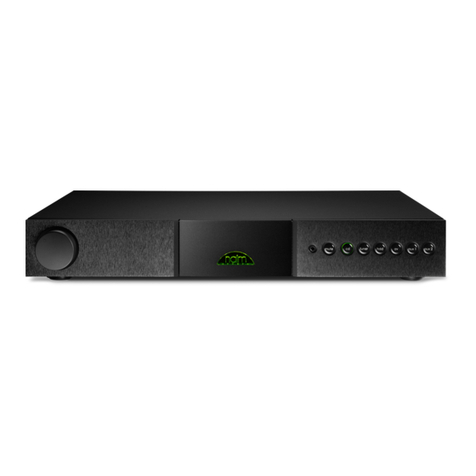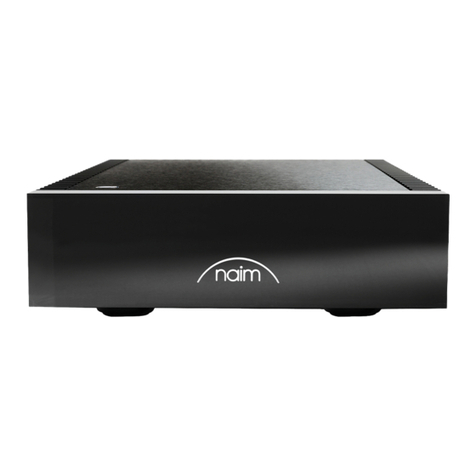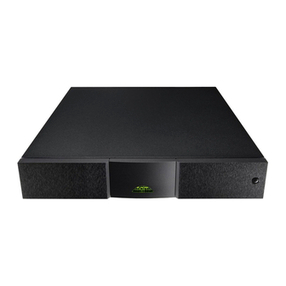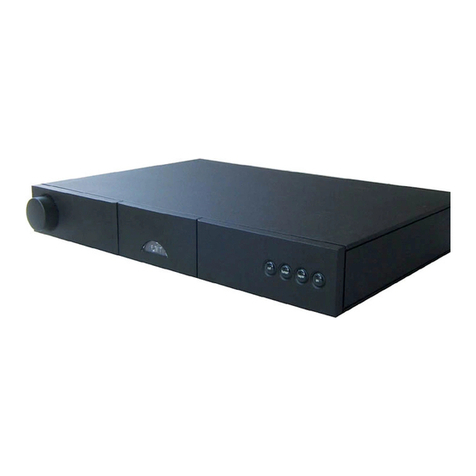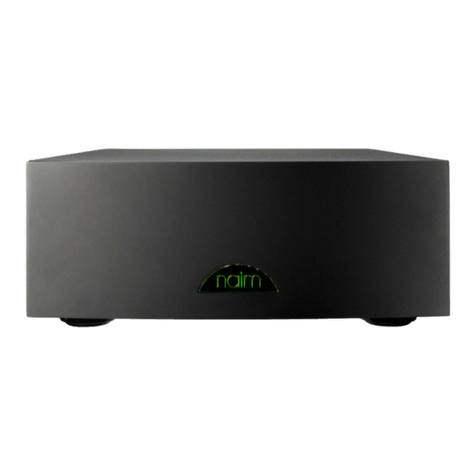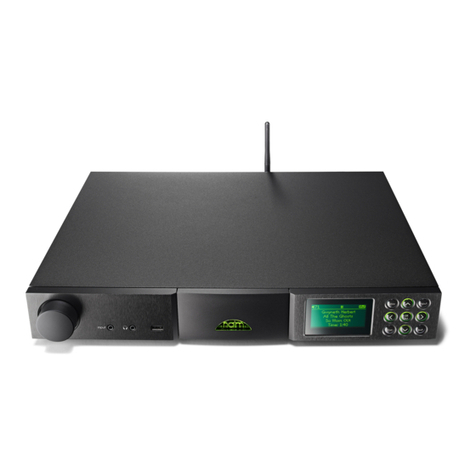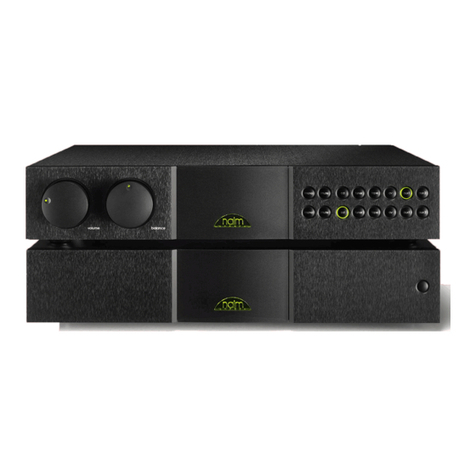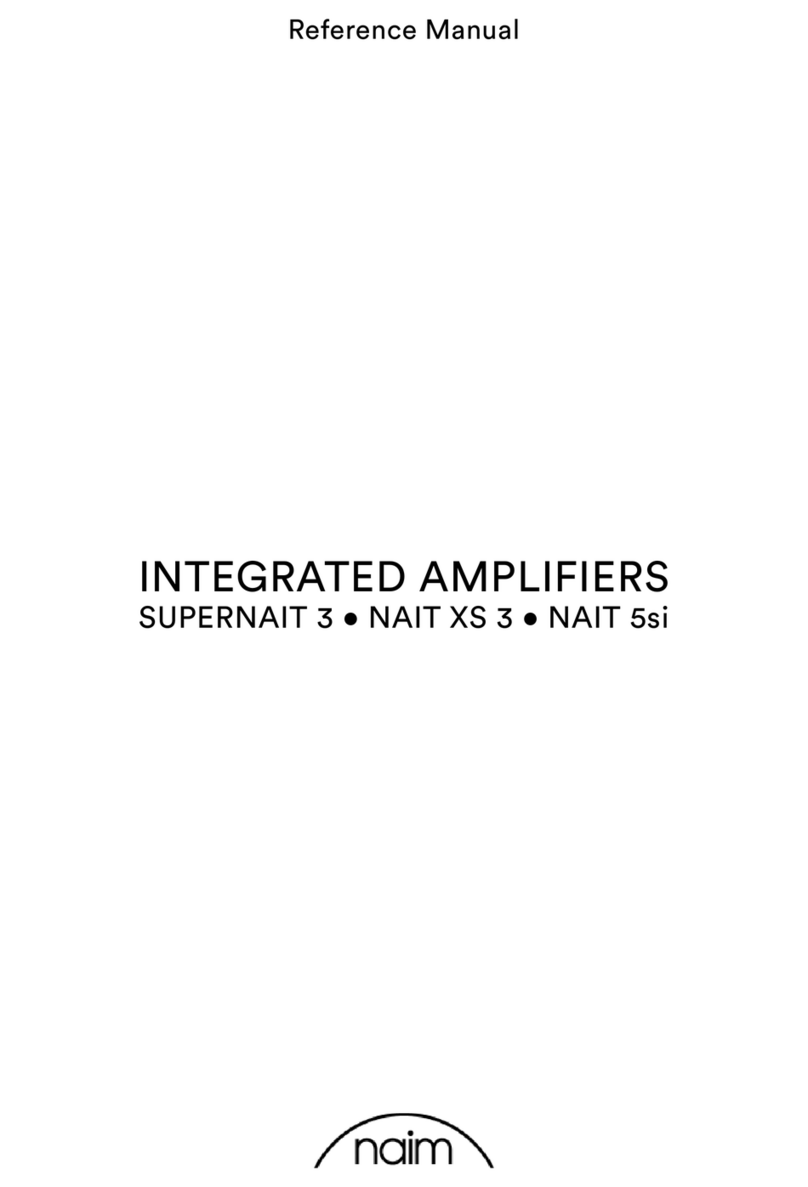2
3.3 mains supply
Where fused plugs are used 13 amp fuses should be fitted.
Fuses of a lower rating will fail after a period of use.
A hi-fi system usually shares a mains circuit with other
household equipment some of which can cause distortion
of the mains waveform. In some Naim equipment such
distortion can lead to a mechanical hum from the
transformers. The hum is not transmitted through the
speakers and has no effect on the performance of the
system but is purely local to the transformer itself. A
separate fused mains circuit (like that reserved for electric
cookers) may reduce transformer hum. Such a circuit
(ideally with a 30 or 45 Amp rating) will also have a lower
impedance, supply cleaner power, and consequently
improve system performance.
Do not wire voltage dependent resistors or noise
suppressors into mains plugs. They degrade the mains
supply and the sound.
3.4 siting the equipment
Power supplies and amplifiers should be located a
reasonable distance away from other equipment. This
separation will stop transformer radiation causing hum
audible from the loudspeakers. The maximum separation
distance for connected equipment is that allowed by the
standard interconnect lead.
Some Naim equipment is extremely heavy. Ensure that your
equipment rack or table can easily support the weight and
is stable.
3.5 if you have a problem
Legal consumer protection varies from country to country.
In most territories a dealer must be prepared to take back
any Naim equipment he has sold you if he cannot make it
work to your satisfaction in your own home. A problem may
be due to a fault in any part of the system or its
installation so it is essential to make full use of your local
dealer’s diagnostic skills on site. Please contact your local
distributor, or Naim at the address in the back of this
manual, if any difficulties cannot be resolved. Some Naim
equipment is made in special versions for different
territories and this makes it impracticable to arrange
international guarantees. Please establish the guarantee
arrangements with your own dealer at the time of sale. We
are always available to offer help and advice.
It is essential that repairs and updates are only carried out
by an authorised Naim dealer, or at the factory by Naim
itself. Many components are made, tested or matched
specially for Naim and appropriate replacements are often
unobtainable from non-specialist sources.
4 Warnings
Naim equipment is designed to offer the finest sound
quality that can be achieved avoiding compromise
wherever possible. This can lead to circumstances that
may be unfamiliar. The material that follows contains
advice specifically related to Naim equipment as well as
more general warnings about the use of domestic audio
products. Please read it carefully.
The transformers in Naim power amplifiers and power
supplies may sometimes make a mechanical noise caused
by distortion of the mains waveform. Naim transformers are
large in size and have heavy gauge secondary windings
making them relatively sensitive to such distortion. A
separate mains circuit for your hi-fi system may reduce the
effect while also giving an overall improvement in sound
quality. It may be necessary however to take account of
mechanical transformer noise when siting your equipment.
IMPORTANT
In order to comply with
current European safety
regulations it is essential
that the Naim loudspeaker
connectors supplied with
amplifiers and loudspeakers
are used.
Do not under any
circumstances allow anyone
to modify your Naim
equipment without first
checking with the factory,
your dealer, or your
distributor. Unauthorised
modifications will invalidate
your guarantee.
For your own safety do not
under any circumstances
open Naim equipment
without first disconnecting
the mains.
The following label is
attached to all mains
powered equipment:
WARNING
THIS APPARATUS
MUST BE EARTHED
Introduction
